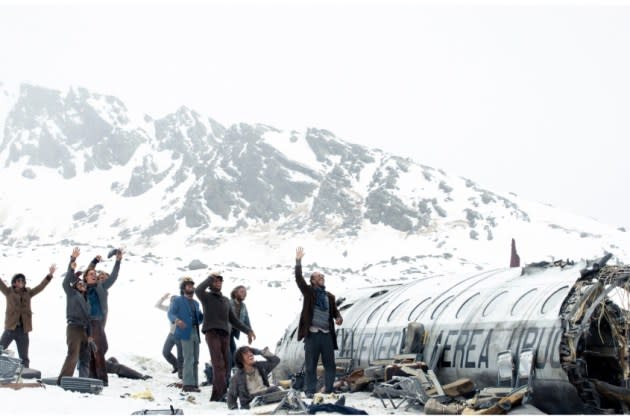3D Digital Twins May Soon Offer Filmmakers Virtual Access to Spain’s Historical Sites, Protected Natural Wonders

Spain’s cultural and historical heritage and its diverse natural landscapes, from Moorish castles and royal palaces to snowy peaks, vast deserts and rugged coastlines, have made the country a prime location for international films and series.
In the last decade, Spain’s national government and key regions – the Canary Islands and the Basque Country’s Bizkaia – have added tax rebates and credits which now rate as among the best in Europe.
More from Variety
The country’s varied lands have served as practically the entire world for Netflix’s “The Crown,” while its imposing Sierra Nevada mountains in Andalusia played a key role in J.A. Bayona’s acclaimed survival drama “Society of the Snow.”
Bayona used the Laguna de las Yeguas area in the Sierra Nevada as a key location in the film, which chronicles the 1972 Uruguayan airplane crash high in the snow-covered Andes that left survivors stranded on a glacier 4,000 meters above sea level known as the Valley of Tears. The film used images from the real site in Argentina as backgrounds for the scenes shot in Spain’s Sierra Nevada.
While the Spanish government is more than happy to attract international film productions to the country, there is growing concern about the protection of national parks, wildlife areas and heritage sites.
Discussing the issue at a special session organized by the Spain Film Commission at the Malaga Festival Industry Zone (MAFIZ) on Wednesday were Piluca Querol of the Andalucía Film Commission; Manuel Mejide, director of Ilux Visual Technologies and head of the Mundos Digitales animation and VFX conference in A Coruña; and Manuel Ramírez, director of studio at VFX company El Ranchito, which provided VFX services for “Society of the Snow.”
Ilux is working with the Spain Film Commission and the country’s Ministry of Digital Transformation and Civil Service on a virtual filming white paper that would formalize best practices for the industry, Mejide explained.
The idea “is to recreate or create a digital twin of a location,” he added. “That digital twin, once it is converted to a 3D model, we can manage it however we want and that allows us to have very great capabilities: The abilities to control the light, to control the elements, to interact with them and even now incorporate 4D virtual characters apart from the real actors themselves, taking it to a controlled space such as a set.”
LED walls, first used in “The Mandalorian,” made virtual sets possible, allowing absolute control of the location so that it can be filmed with real actors in different locations, Mejide pointed out.
The best practices white paper is aimed at introducing industry standards to better control what could become a flood of virtual filming in Spain. Such standardization would, for example, make it possible to shoot in locations that would normally be prohibited, such as protected natural and wildlife areas and heritage sites — but just once. A kind of virtual location template would then be created with the material that could then be shared.
“At first glance it may seem that this reduces location shooting, but I see the opposite,” Mejide stressed. Companies often rule out shooting in certain locations because they know that they would not receive necessary permits or be able set up the necessary equipment for an adequate production.
“What this does is open up a lot of possibilities so that the locations are increasingly spread out, but they are filmed only once and then can be used by everyone, by all the studios.”
The 16th-century Royal Site of San Lorenzo de El Escorial near Madrid is one such site. Scanning of several parts of the historical residence, including the façade, the library and a patio, was carried out this week according to the initial guidelines that are being established, Mejide explained.
These virtual spaces can then be used by any company for film, series, animation or game production because they will have the standardization and necessary levels of detail to serve the use that each company needs, he added.
Best of Variety
Sign up for Variety’s Newsletter. For the latest news, follow us on Facebook, Twitter, and Instagram.

 Yahoo Lifestyle
Yahoo Lifestyle 